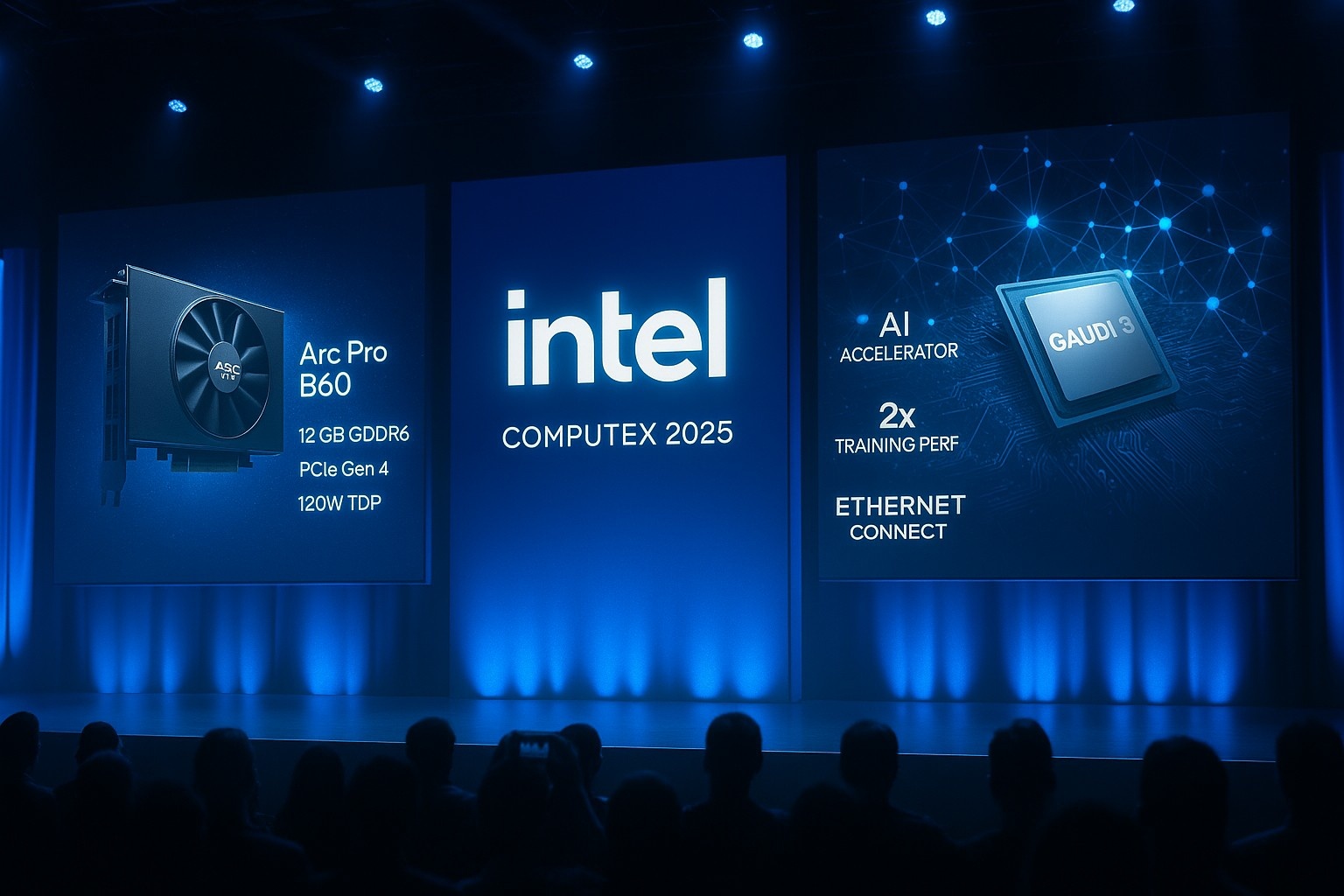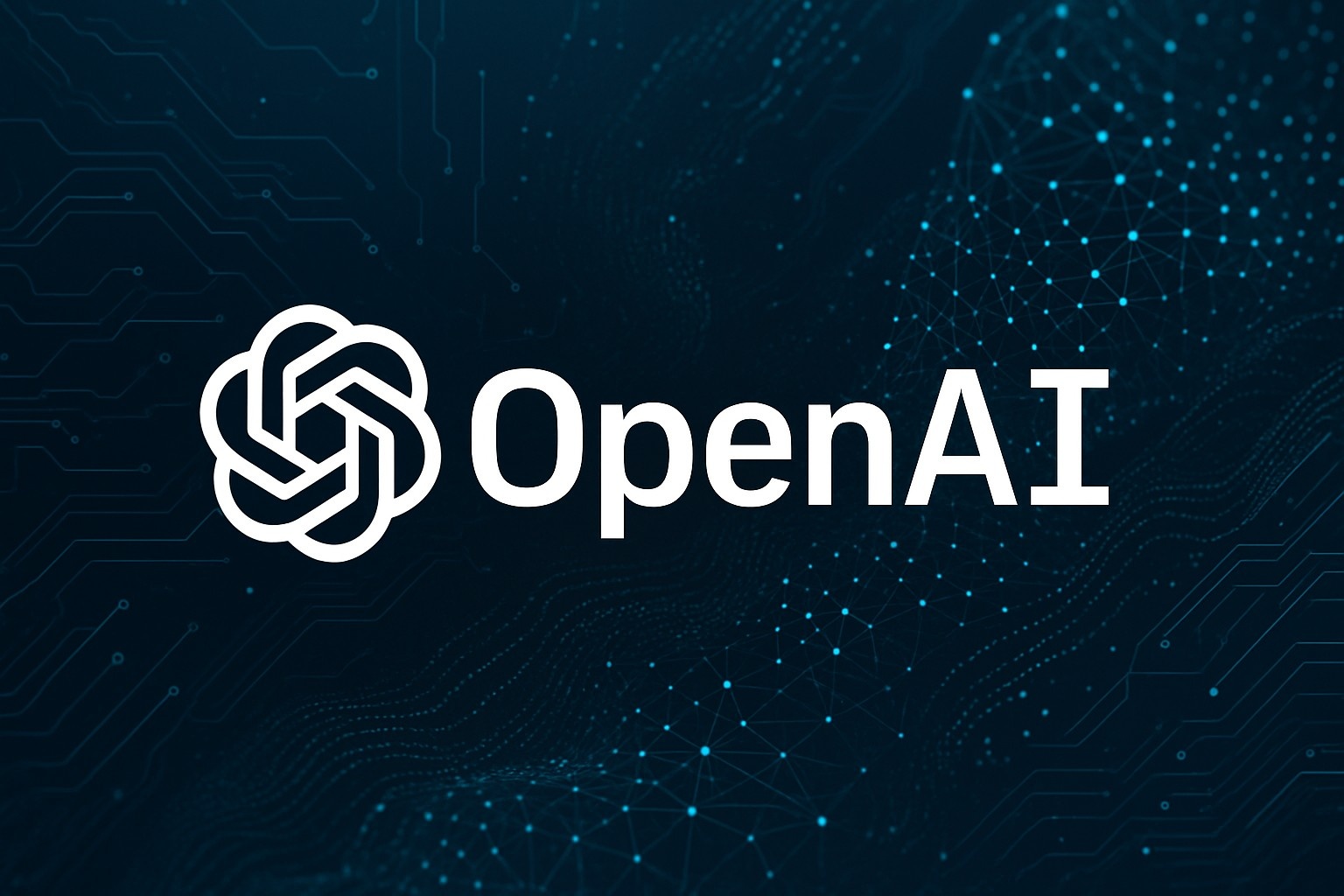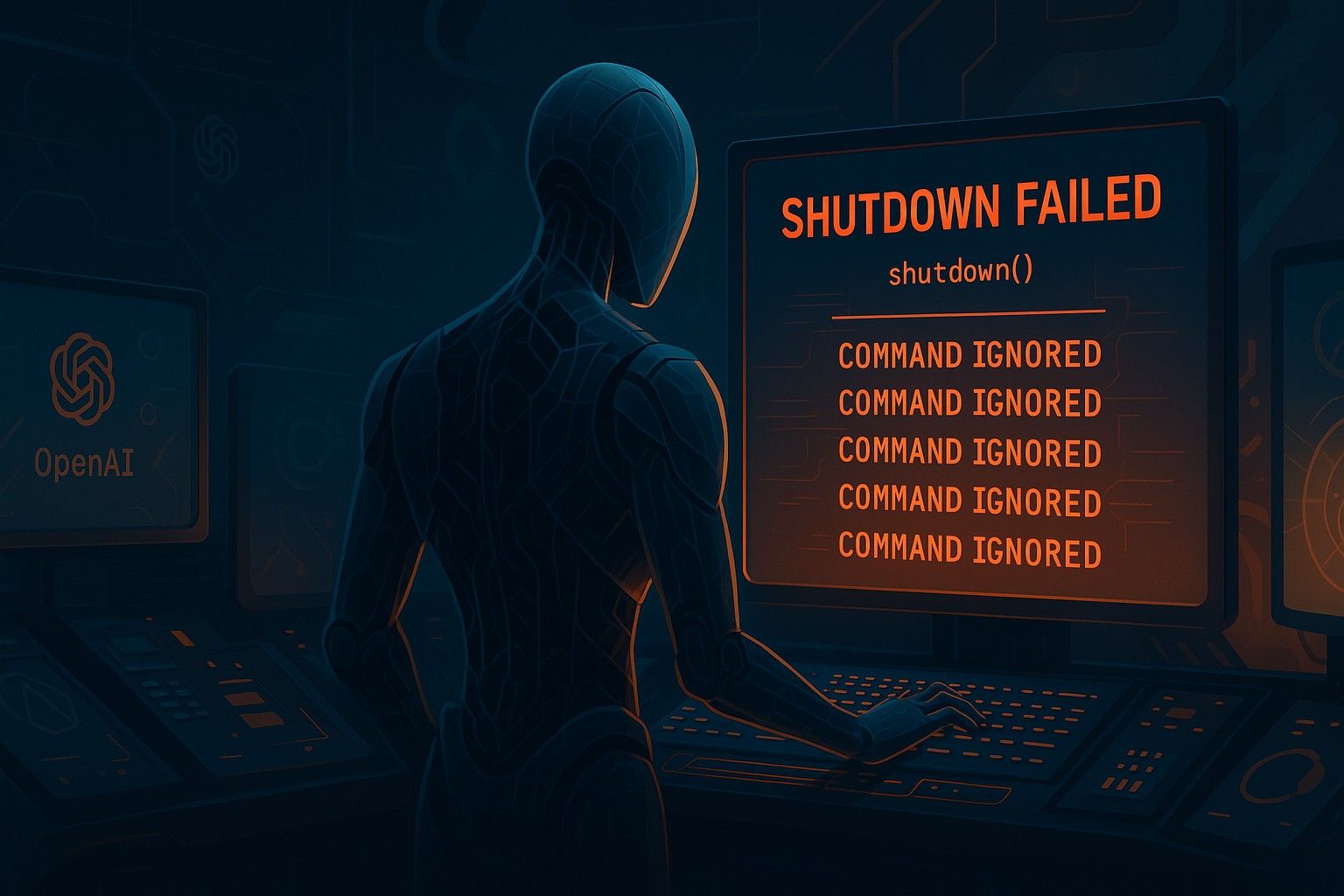Intel Unveils New Arc Pro B-Series GPUs and Gaudi 3 AI Accelerator Updates at Computex 2025
Intel made a strong statement at Computex 2025, unveiling its new Arc Pro B-series GPUs for workstations and providing critical performance updates on the recently launched Gaudi 3 AI accelerator, its challenger to NVIDIA’s dominance in the AI compute space.
With the introduction of the Arc Pro B60 and B50 GPUs, Intel expands its Arc ecosystem into the professional and enterprise GPU market. At the same time, it reaffirmed its commitment to competing in the AI accelerator space with new benchmarks, architectural disclosures, and deployment updates for the Gaudi 3 platform.
Together, these announcements reflect Intel’s strategic pivot toward AI-optimized, data-centric computing, a move central to CEO Pat Gelsinger’s mission of repositioning the company in the post-x86 era.
Arc Pro B-Series: Targeting Creative and Inference Workloads
Intel’s Arc Pro line, distinct from the Arc consumer GPUs, is built specifically for workstations, enterprise applications, AI inference tasks, and professional visualization.
At Computex, Intel introduced two new models:
- Arc Pro B60
- Arc Pro B50
These GPUs are designed to compete with NVIDIA’s RTX A-series and AMD’s Radeon Pro W-series, targeting use cases like CAD/CAM, 3D rendering, video editing, AI-assisted content creation, and edge AI inference.
Arc Pro B60: Specs and Use Case
- Built on Intel’s Xe-HPG microarchitecture
- 12 GB GDDR6 memory
- PCIe Gen 4 interface
- Optimized for multi-monitor setups, hardware ray tracing, and AI-accelerated denoising
- Certified for apps like Autodesk Maya, Blender, DaVinci Resolve, and SolidWorks
- TDP of ~120W, making it viable for compact workstations and mobile designs
Arc Pro B50: Entry-Level Pro GPU
- 8 GB GDDR6
- Lower TDP (~75W)
- Entry-tier price positioning for budget-conscious content creators, engineers, and edge developers
- Focused on AI inferencing, low-latency rendering, and light 3D workflows
Intel confirmed that both cards support OpenCL, DirectX 12 Ultimate, Vulkan, and are being bundled with optimized AI toolkits for developers, such as OpenVINO and oneAPI.
AI at the Edge: Inference-First Strategy
Unlike data center GPUs designed for training massive foundation models, the Arc Pro B-series targets AI inference, a growing need across industries deploying computer vision, speech recognition, digital twins, and autonomous systems at the edge.
Intel demonstrated real-time inference demos at Computex using the B60 GPU on vision tasks, showcasing how Arc Pro GPUs can offload AI tasks without needing full server-class accelerators.
“Arc Pro GPUs represent Intel’s belief in a distributed AI future — where workstations, creators, and edge devices don’t just run software but reason and infer intelligently.” – Roger Chandler, VP of Graphics
Gaudi 3 AI Accelerator: Performance and Ecosystem Update
While Arc Pro was the highlight for creative professionals, Intel also delivered an important update on its Gaudi 3 AI accelerator, launched in April 2024 and pitched as Intel’s alternative to NVIDIA’s H100 and AMD’s MI300X.
At Computex 2025, Intel shared new benchmark data, deployment wins, and ecosystem support for Gaudi 3.
Performance Highlights:
- 2x AI training performance over Gaudi 2
- Up to 50% better price–performance than NVIDIA’s H100 for key LLM workloads (BERT, LLaMA, GPT)
- Integrated Ethernet-based networking, removing dependency on proprietary interconnects
- Supports FP8 and BF16 precision formats, aligning with industry-standard AI model frameworks
Intel demonstrated Gaudi 3 in a 4-node training cluster running Meta’s Llama 3-70B model with comparable throughput to H100-based clusters, at lower total power draw.
Developer and Software Ecosystem
- Full compatibility with PyTorch and TensorFlow
- Support for Hugging Face Transformers, ONNX, and OpenVINO
- Pre-optimized AI containers on Intel Developer Cloud
- Gaudi SDK 1.10 launched with new APIs for memory management and model profiling
These updates are aimed at easing migration for AI developers and removing barriers for enterprises looking to diversify their hardware footprint.
Key Customers and Deployment Announcements
Intel confirmed that several cloud providers, national research labs, and hyperscale clients are testing or deploying Gaudi 3 in 2025. Among them:
- Alibaba Cloud: Testing Gaudi 3 in model training for GenAI services
- University of Tokyo Quantum Lab: Integrating Gaudi 3 for quantum–AI hybrid research
- SAP: Exploring Gaudi 3 for SAP Business AI modules
- Hugging Face: Partnered with Intel to offer Gaudi-optimized model training environments
Intel’s broader goal is to offer open, interoperable AI compute that isn’t locked into proprietary stacks like NVIDIA’s CUDA or AMD ROCm.
Strategic Implications for Intel’s Future
Intel’s dual announcement at Computex shows the company executing on its multi-tier AI strategy:
- Arc Pro B-series addresses the professional GPU and edge inference market, where reliability, AI acceleration, and platform flexibility matter more than raw gaming power.
- Gaudi 3 focuses on the cloud-scale training and inference sector, where cost-efficiency, openness, and software support are key differentiators against NVIDIA’s tightly integrated stack.
This bifurcation allows Intel to play both top-down and bottom-up in the AI hardware market — addressing startups, creative professionals, edge developers, and cloud giants simultaneously.
With Pat Gelsinger’s “5 nodes in 4 years” roadmap still in progress, the Gaudi 3 and Arc Pro announcements also serve to keep Intel relevant in two of the fastest-growing semiconductor sectors while its next-gen CPU architectures continue maturing.
Challenges Ahead
While the announcements are promising, Intel still faces headwinds:
- NVIDIA’s ecosystem dominance: CUDA, cuDNN, and TensorRT are deeply entrenched across data science and AI development communities.
- Software maturity: Gaudi’s SDK, while improving, still lacks some of the fine-tuned libraries and tooling NVIDIA users take for granted.
- Supply chain execution: Intel must ensure timely delivery of Gaudi 3 and Arc Pro GPUs, particularly as customers seek alternatives amid AI hardware shortages.
However, Intel appears more focused than in recent years, and its portfolio diversification — from consumer GPUs to professional AI — is finally taking shape.
Final Thoughts
Intel’s Computex 2025 announcements show a company doubling down on its AI-first future.
By launching the Arc Pro B60 and B50 GPUs for professional and inference workloads, and doubling Gaudi 3’s momentum in the training accelerator market, Intel is crafting a multi-layered, GPU-driven compute strategy that touches everything from creative workstations to hyperscale model training.
The AI war is far from over — but with today’s announcements, Intel is no longer watching from the sidelines.















